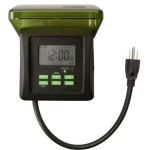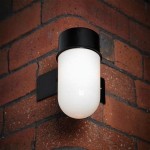How To Remove Paint From Outdoor Furniture
Outdoor furniture, exposed to the elements, frequently requires refinishing to maintain its aesthetic appeal and structural integrity. Paint, while protective, can become chipped, cracked, or faded over time, necessitating its removal before a fresh coat can be applied. This process, while seemingly straightforward, requires careful consideration of the furniture's material, the type of paint used, and safety precautions to prevent damage to the furniture and harm to the individual performing the task.
Preparation is paramount for successful paint removal. This includes gathering the necessary tools and materials, selecting the appropriate method, and ensuring a safe working environment. Rushing the process or using unsuitable techniques can lead to irreversible damage to the furniture and unsatisfactory results.
Identifying the Furniture Material and Paint Type
The first step in removing paint effectively is identifying the material of the outdoor furniture. Common materials include wood, metal (aluminum, iron, steel), plastic, and wicker. Each material reacts differently to various paint removal methods. For instance, harsh chemical strippers might corrode certain metals or soften plastic, while aggressive sanding could damage delicate wicker weaves.
Wood furniture, whether hardwood like teak or softwood like pine, requires gentle yet effective methods. Metal furniture can generally withstand more aggressive techniques, but it's crucial to consider the metal's composition to avoid corrosion or damage to any protective coatings. Plastic furniture often presents the greatest challenge, as it is susceptible to melting or warping under heat or chemical exposure. Wicker furniture, with its intricate weave, requires careful and precise methods to avoid damaging the delicate fibers.
Identifying the type of paint used is equally important. Oil-based paints are typically more durable and resistant to removal than water-based latex paints. Older furniture may have multiple layers of paint, making the removal process more complex. Distinguishing between these paint types can inform the selection of the most effective removal method. A simple test involves applying a small amount of denatured alcohol to the paint. If the alcohol softens or dissolves the paint, it is likely latex-based. If not, it is likely oil-based.
Knowing the paint type can also assist in selecting the appropriate chemical stripper. Certain strippers are formulated for specific types of paint, offering enhanced effectiveness and reducing the risk of damage to the furniture material. Using the incorrect stripper may result in ineffective paint removal and prolonged exposure to potentially harmful chemicals.
Choosing the Appropriate Paint Removal Method
Several methods exist for removing paint from outdoor furniture, each with its advantages and disadvantages. The choice of method depends on the furniture material, paint type, desired level of precision, and safety considerations. Common methods include chemical stripping, sanding, heat gun application, and pressure washing.
Chemical Stripping: This involves applying a chemical solution to the paint surface, which softens the paint and allows it to be scraped away easily. Chemical strippers are effective for removing multiple layers of paint and can be used on various materials. However, they require careful handling due to their potentially hazardous nature. Proper ventilation and personal protective equipment (PPE), such as gloves and eye protection, are essential when using chemical strippers. Different types of chemical strippers are available, including those formulated for specific paint types and materials. It is crucial to choose a stripper that is compatible with the furniture material to avoid damage. After applying the stripper, allow it to dwell for the recommended time, then scrape away the softened paint with a putty knife or scraper. Thoroughly clean the furniture with water and a neutralizer, as recommended by the stripper manufacturer, to remove any remaining chemical residue.
Sanding: This method involves using abrasive materials to physically remove the paint. Sanding is suitable for wood and metal furniture, but it can be challenging to use on intricate surfaces or delicate materials. It is important to use the appropriate grit sandpaper for the task. Start with a coarser grit to remove the bulk of the paint and then progress to finer grits to smooth the surface. Power sanders can speed up the process, but they require careful control to avoid gouging or damaging the furniture. When sanding, always wear a dust mask to avoid inhaling paint particles. After sanding, thoroughly clean the furniture to remove any dust or debris.
Heat Gun Application: This method involves using a heat gun to soften the paint, allowing it to be scraped away. Heat guns are effective for removing paint from wood and metal furniture. However, it is crucial to use caution to avoid overheating the furniture or igniting any flammable materials. Hold the heat gun several inches away from the surface and move it slowly and evenly to avoid scorching the paint or the furniture material. As the paint softens, scrape it away with a putty knife or scraper. Wear gloves and eye protection when using a heat gun. Avoid using a heat gun on plastic furniture, as it can melt or warp the material.
Pressure Washing: This method involves using a high-pressure water stream to blast away the paint. Pressure washing is best suited for durable materials like metal and some types of plastic. However, it can damage softer materials like wood or wicker. Use a low-pressure setting to avoid damaging the furniture. Always test the pressure washer on an inconspicuous area of the furniture before applying it to the entire surface. Wear eye protection and appropriate clothing when using a pressure washer.
Implementing Safety Precautions
Paint removal can be a hazardous process if proper safety precautions are not followed. The risks associated with each method vary, but common hazards include exposure to toxic chemicals, inhalation of paint dust, and physical injury from tools and equipment. Prioritizing safety is crucial to protect both the individual performing the task and the surrounding environment.
Personal Protective Equipment (PPE): Wearing appropriate PPE is essential to minimize exposure to hazardous materials. This includes gloves, eye protection, a respirator or dust mask, and appropriate clothing. Gloves protect the skin from contact with chemical strippers and paint dust. Eye protection prevents paint particles and chemical splashes from entering the eyes. A respirator or dust mask prevents inhalation of paint dust, which can contain lead and other harmful substances. Appropriate clothing protects the skin from scratches, splinters, and chemical exposure.
Ventilation: Adequate ventilation is crucial when using chemical strippers or sanding paint. Work in a well-ventilated area, preferably outdoors. If working indoors, open windows and doors to allow for airflow. Use a fan to circulate air and remove fumes. Avoid working in enclosed spaces with poor ventilation.
Proper Disposal of Waste: Paint and chemical waste must be disposed of properly to prevent environmental contamination. Follow local regulations for the disposal of hazardous materials. Do not pour paint or chemical waste down drains or into the environment. Contact your local waste management authority for information on proper disposal methods. Consider using eco-friendly paint strippers and disposal methods to minimize environmental impact.
Tool Safety: Exercise caution when using tools such as scrapers, putty knives, heat guns, and power sanders. Use sharp tools with caution to avoid cuts or injuries. Follow the manufacturer's instructions for operating power tools safely. Wear appropriate safety gear, such as gloves and eye protection, when using these tools.
First Aid: Keep a first aid kit readily available in case of accidents. Know the location of the nearest medical facility and the emergency contact information. Familiarize yourself with the potential health hazards associated with the chemicals and materials you are using. In case of exposure or injury, seek medical attention promptly.
After successfully removing the paint, the furniture surface must be properly prepared for refinishing. This typically involves cleaning, sanding, and priming the surface. A clean surface ensures proper adhesion of the new paint or finish. Sanding smooths the surface and removes any imperfections. Priming creates a uniform surface and enhances the adhesion of the topcoat. Following these steps will result in a durable and aesthetically pleasing finish that will protect the furniture from the elements and extend its lifespan.
Thorough cleaning is essential to remove any remaining paint residue, dust, or debris. Use a mild detergent and water to scrub the surface. Rinse thoroughly and allow the furniture to dry completely before proceeding. Inspect the surface for any imperfections, such as scratches or dents, and repair them as needed. Use wood filler to fill in cracks or holes and sand the repaired areas smooth. If the furniture has any rust, remove it with a wire brush or sandpaper. Apply a rust inhibitor to prevent further corrosion. Before applying the new paint or finish, consider applying a primer. Primer improves adhesion, provides a uniform surface, and helps to block stains. Choose a primer that is compatible with the furniture material and the type of paint or finish you will be using.

How To Remove Paint From Metal Diyer S Guide Bob Vila

3 Ways To Remove Paint From Old Wood Furniture Pros Cons Everyday House

How To Strip Paint On Dining Chairs Reinvented Delaware

How To Paint Aluminium Garden Furniture And Re It

How To Refinish Aluminium Patio Furniture Ehow

How To Paint An Outdoor Metal Chair

Absolutely The Best Way To Remove Paint From Spindles

How To Spray Paint Patio Furniture Ultimate 2024 Guide

12 Outdoor Furniture Makeovers Easier Than You Think

7 Ways To Remove Rust From Metal Furniture







